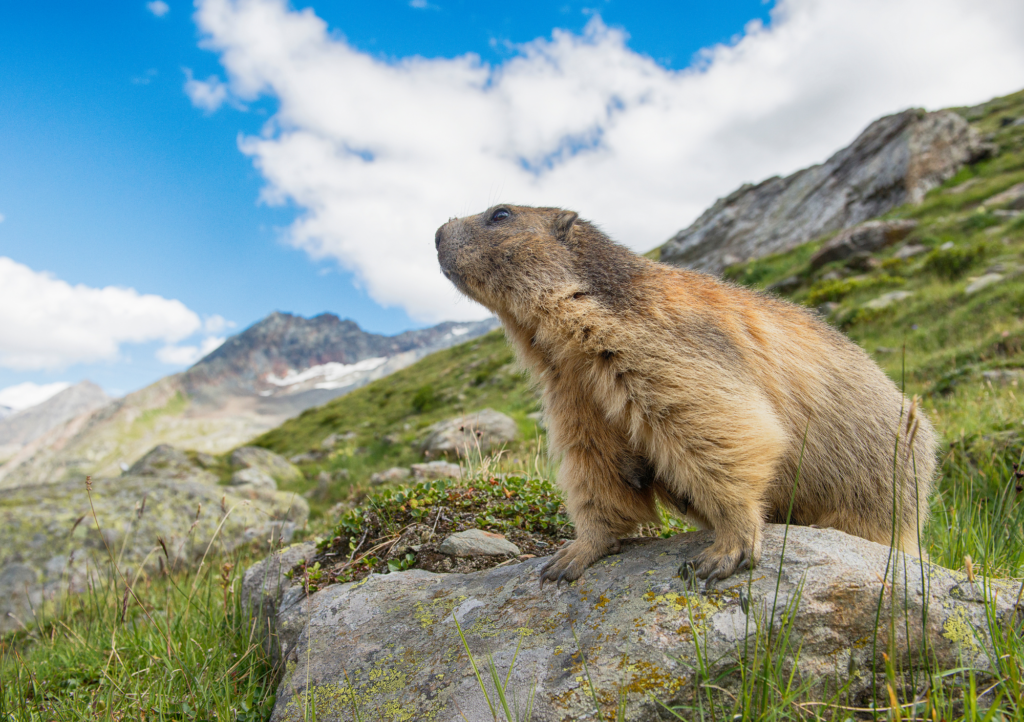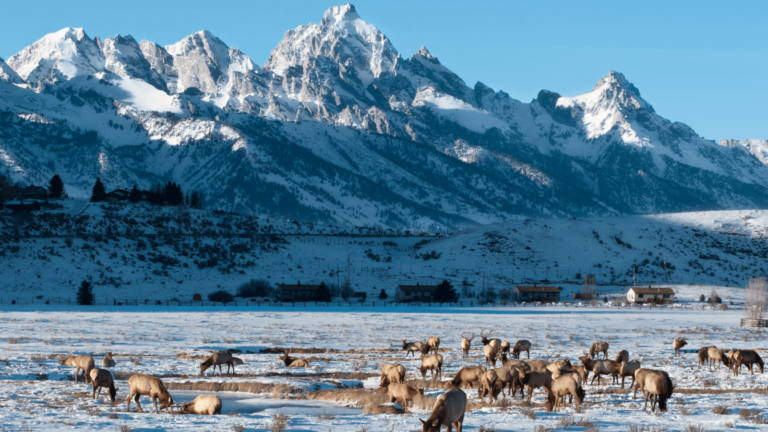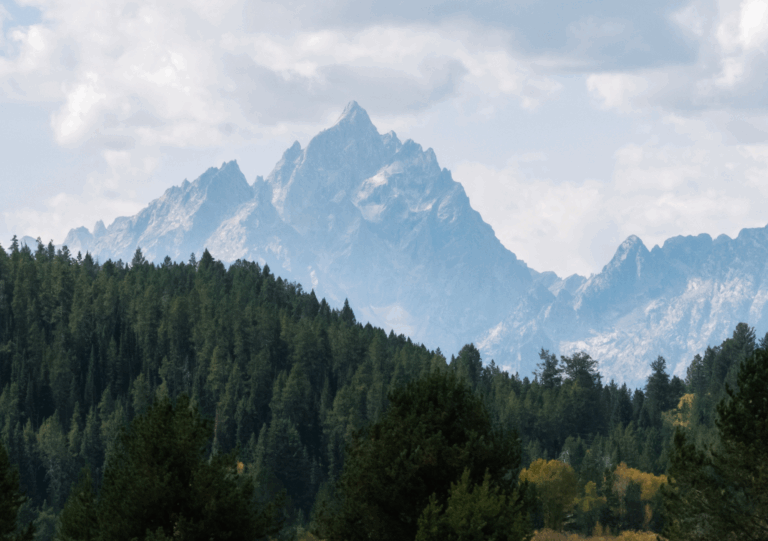Jackson Hole, Wyoming, is a treasure trove of wildlife, with the charming and curious Wyoming marmot being one of its lesser-known but equally fascinating residents. Marmots are large, burrowing rodents belonging to the squirrel family, Sciuridae. They are known for their stout bodies, short legs, and bushy tails. Marmots typically weigh between 5 to 11 pounds and can measure up to 2 feet in length. These burrowing mammals can be spotted in various habitats around the Snake River and the broader Jackson Hole area. Part three of our Jackson Hole wildlife series will explore the habitats, behaviors, conservation efforts, and best spots for encountering marmots in Jackson Hole.
Habitats of Marmots in Jackson Hole
Marmots are well-adapted to the mountainous and rocky landscapes of Jackson Hole. They prefer areas that provide ample cover and opportunities for burrowing.
Rocky Outcrops and Alpine Meadows: Marmots are commonly found in rocky outcrops and talus fields at higher elevations. These areas offer plenty of nooks and crannies for shelter and burrowing. Alpine meadows adjacent to these rocky areas provide rich foraging grounds during the summer months.
Subalpine and Montane Zones: In addition to alpine habitats, marmots also inhabit subalpine and montane zones. Here, they can be found near forest edges and in open grassy areas where they can feed on a variety of plants.
Behaviors of Marmots
Understanding the behaviors of marmots can enhance your chances of observing them and appreciating their unique characteristics. This journal
Hibernation: Marmots hibernate for a significant portion of the year, typically from late September to early May. During hibernation, they retreat to their burrows, where they slow their metabolism and conserve energy.
Feeding: Marmots are herbivores, primarily feeding on grasses, forbs, and flowers. During the summer, they spend much of their time foraging to build up fat reserves for the long hibernation period.
Social Structure: Marmots are social animals that live in colonies. They communicate with each other using a variety of vocalizations, including whistles and chirps, to warn of potential predators.
Sunning and Sentry Duty: Marmots are often seen sunning themselves on rocks or performing sentry duty. One or more individuals will stand on high alert while the rest of the group forages, ready to sound an alarm if danger approaches.
Best Spots for Encountering Marmots in Jackson Hole
For those eager to see marmots in the wild, Jackson Hole offers several prime locations:
- Grand Teton National Park: The park is a haven for marmots, particularly in areas with rocky terrain and alpine meadows. Look for them around Cascade Canyon and Paintbrush Canyon.
- Teton Pass: This high mountain pass offers excellent opportunities to spot marmots, especially in the rocky areas near the summit.
- Death Canyon: Located in the southern part of Grand Teton National Park, Death Canyon is another good spot for marmot sightings.
- Gros Ventre Range: The rugged terrain of the Gros Ventre Range provides ideal habitat for marmots. Hiking trails in this area often yield sightings.
Conservation Efforts and Challenges
Efforts to conserve Wyoming marmot populations in Jackson Hole are essential for maintaining the ecological balance and ensuring their survival. However, marmots face several challenges that require ongoing attention and action.
Conservation Efforts:
- Habitat Protection: Protecting and preserving marmot habitats, particularly alpine meadows and rocky outcrops, is crucial for their survival.
- Research and Monitoring: Ongoing research and monitoring help track marmot populations and health, informing management decisions and conservation strategies.
- Public Awareness: Raising awareness about the importance of marmots and encouraging responsible wildlife viewing can minimize human disturbances.
Challenges:
- Climate Change: Changing weather patterns and warming temperatures can affect the availability of suitable habitats and food sources for marmots.
- Human Encroachment: Development and recreational activities can disrupt marmot habitats and lead to increased human-wildlife conflicts.
- Predation: Marmots are preyed upon by a variety of predators, including coyotes, eagles, and hawks. Ensuring that predator-prey dynamics remain balanced is crucial for marmot populations.
Jackson Hole and the Snake River region provide fantastic opportunities to observe marmots in their natural habitats. Whether you’re hiking through alpine meadows or exploring rocky outcrops, encountering these social and industrious animals is a highlight of any wildlife-watching adventure. For more on Jackson Hole wildlife, check out our blog on moose in Jackson Hole and our article on birds of prey along the Snake River. Don’t forget to join us on a Snake River scenic float and get a chance to see the marmots and other animals from the water!
At Teton Scenic Float Tours, we offer unforgettable Grand Teton float trips in Jackson Hole along the scenic Snake River. Experience the tranquil waters of the West, surrounded by breathtaking scenery and diverse wildlife. Our custom rafts, equipped with cushioned chairs, ensure a comfortable and smooth ride. Whether you’re seeking a private float or a public adventure, we strive to make your Snake River scenic float trip an experience you’ll cherish forever. Join us and discover the magic of Wyoming’s natural beauty and the fascinating Wyoming marmot in their natural habitat.






